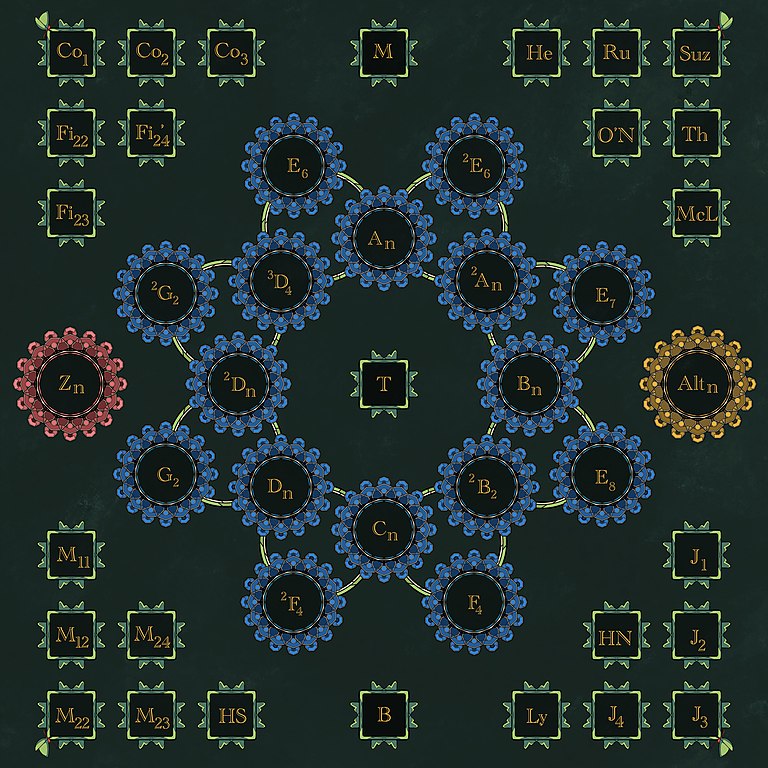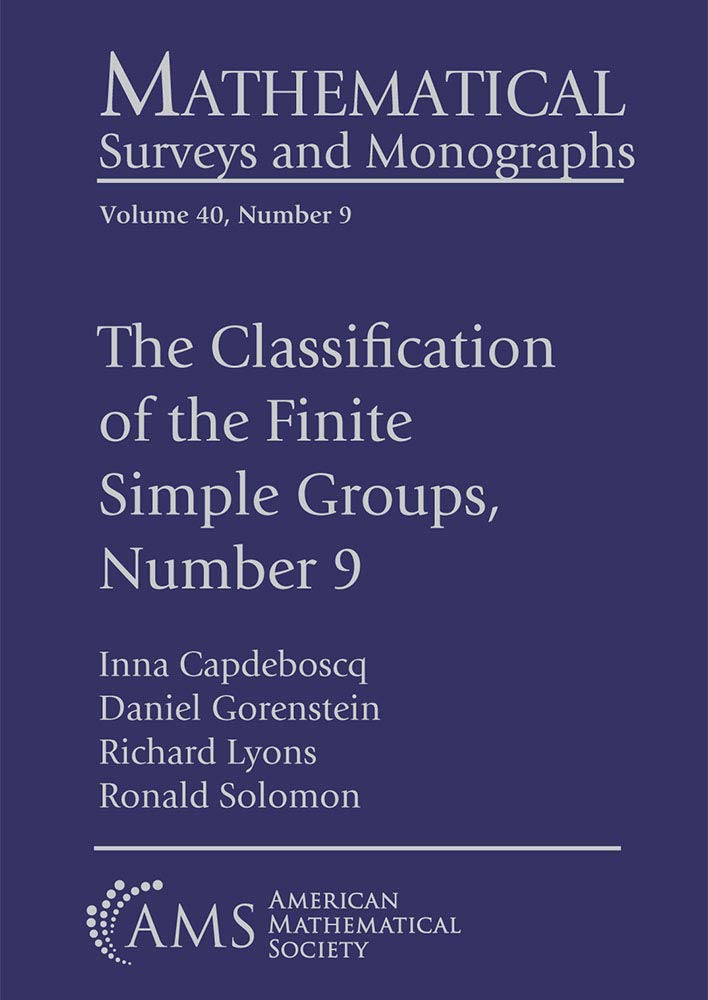Classification of Finite Simple Groups
The Classification of Finite Simple Groups is widely acknowledged to be one of the major results in modern Mathematics. The proof was completed in 2004 and occupies around 20,000 journal pages spread across more than 500 separate articles written by more than 100 mathematicians. It is likely the longest and most complicated proof of a theorem in Mathematics. Whole books have been written to explain how the original proof was constructed. Yet, even with this help, the task of reading the complete proof would be daunting to say the least. Inna CapdeboscqLink opens in a new window is participating in a monumental effort by a small group of mathematicians to produce a new unified proof – the Generation-2 proof – of the Classification of Finite Simple Groups.
R. M. Guralnick, Bull. Amer. Math. Soc. 55 (2018), 451-452Link opens in a new window.
The project was initiated in the last century by D. GorensteinLink opens in a new window, R. LyonsLink opens in a new window and R. SolomonLink opens in a new window. Its strategy differs considerably from the original one. The expected length of the Generation-2 proof is of about 5,000 pages published in 12 volumes. At this moment Volumes 1 through 9 are published. Inna has been involved in the Generation-2 project for several years, providing small contributions to Volume 6 and 7. Inna co-authored the recently published Volume 9 and is currently in a process of completing Volume 10. Including the anticipated future contribution of G. StrothLink opens in a new window, and possibly others, it is expected that the entire new proof will have very few authors.
The Classification Theorem is used and assumed correct in wide-ranging areas of mathematics – group theory (goes without saying!), algebraic and arithmetic geometry, number theory, and logic. The theorem is found in combinatorics and graph theory, and it can be invoked to speed up algorithms in computer algebra software. Because the original proof cannot realistically be checked, lingering doubts may still exist. This makes the completion of this second, unified proof essential.
Professor: “In your PhD thesis you cannot use a result whose proof you do not understand.”
PhD student: “but professor, my work relies on the Classification of Finite Simple Groups.”
Professor: “……… never mind.”
WMI Magazine staff
Published 23 January 2023
In elementary terms, the Classification Theorem states that every finite simple group is either
- cyclic of prime order, or
- alternating, or
- of Lie type, or
- one of the "sporadic" types.
Explore Further:
Award-winning articleLink opens in a new window by Richard Elwes
Doc Madhattan blog postLink opens in a new window by Gianluigi Filippelli
A brief historyLink opens in a new window by Ronald Solomon
Last person standingLink opens in a new window by David Corfield
BrowseLink opens in a new window some of the associated artwork

(click Link opens in a new windowfor original source)

